There are turn-on and turn-off losses with every switching cycle, both in driving the switching elements themselves (gate drive loss if we're talking MOSFETs) and in the power train if you're considering a hard-switching topology like the step-down converters pictured in your question.
Reducing the operating frequency reduces the number of these events per unit time - all of which are lossy. Voila, you're saving some power now.
However, the benefits of lower frequency switching aren't free. The result of a lower switching frequency is higher peak current per switching cycle.
There's generally a balancing point between switching / gate losses and conduction losses due to the current. Finding the balance is part of the 'magic' in power supply design.
Higher frequency operation reduces the peak current (which means smaller magnetics) but increases gate and switching losses. Again, it's all about balance.

